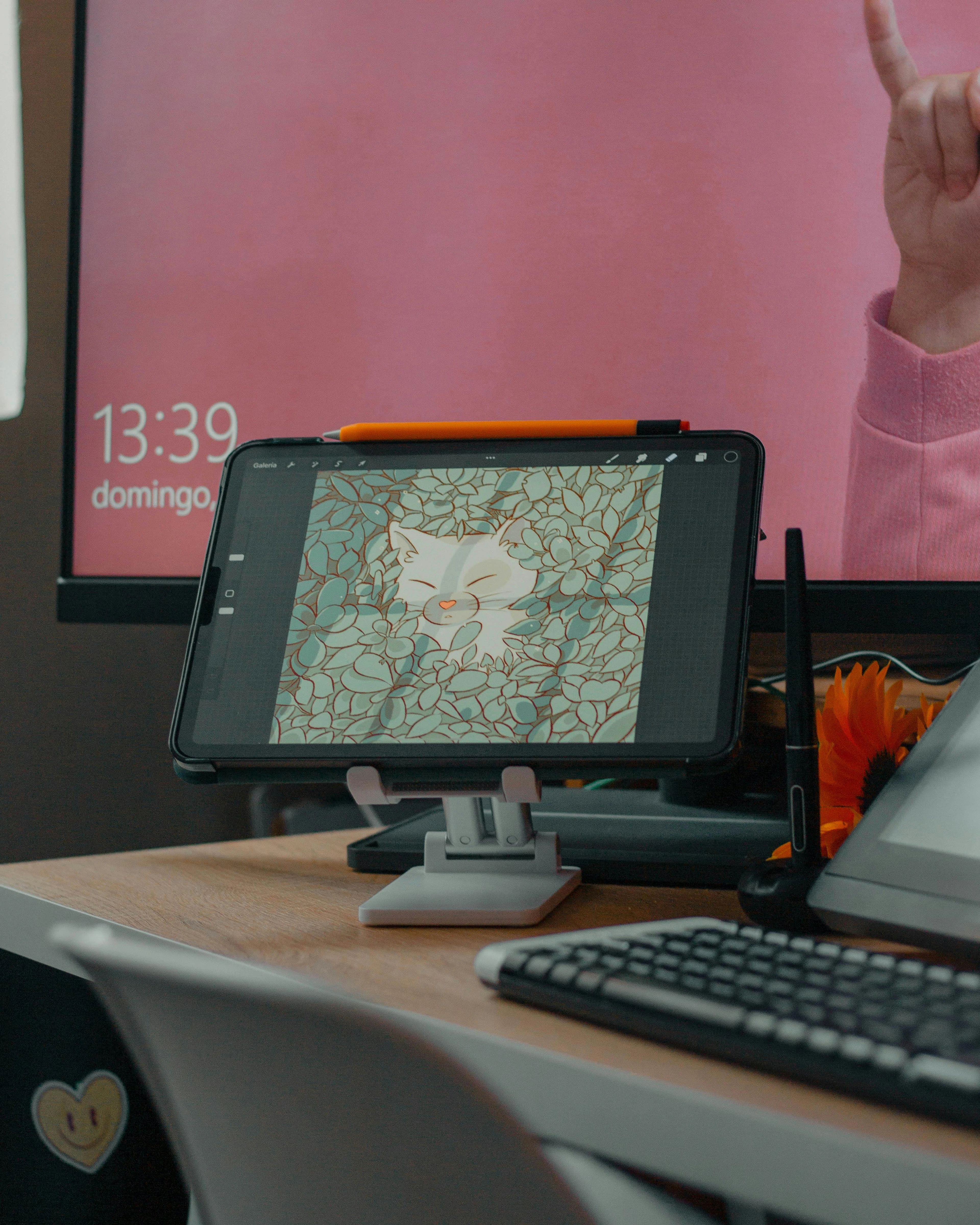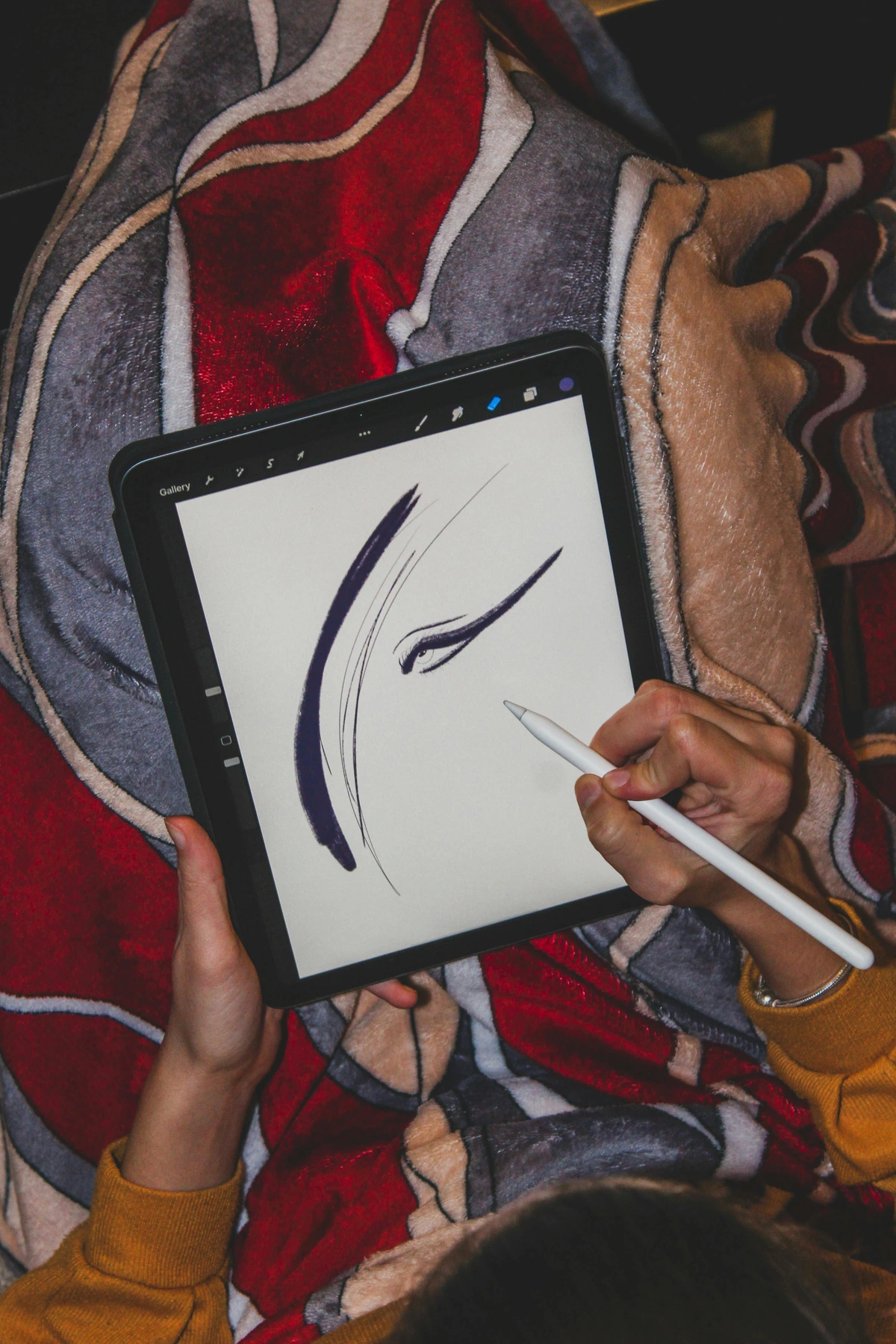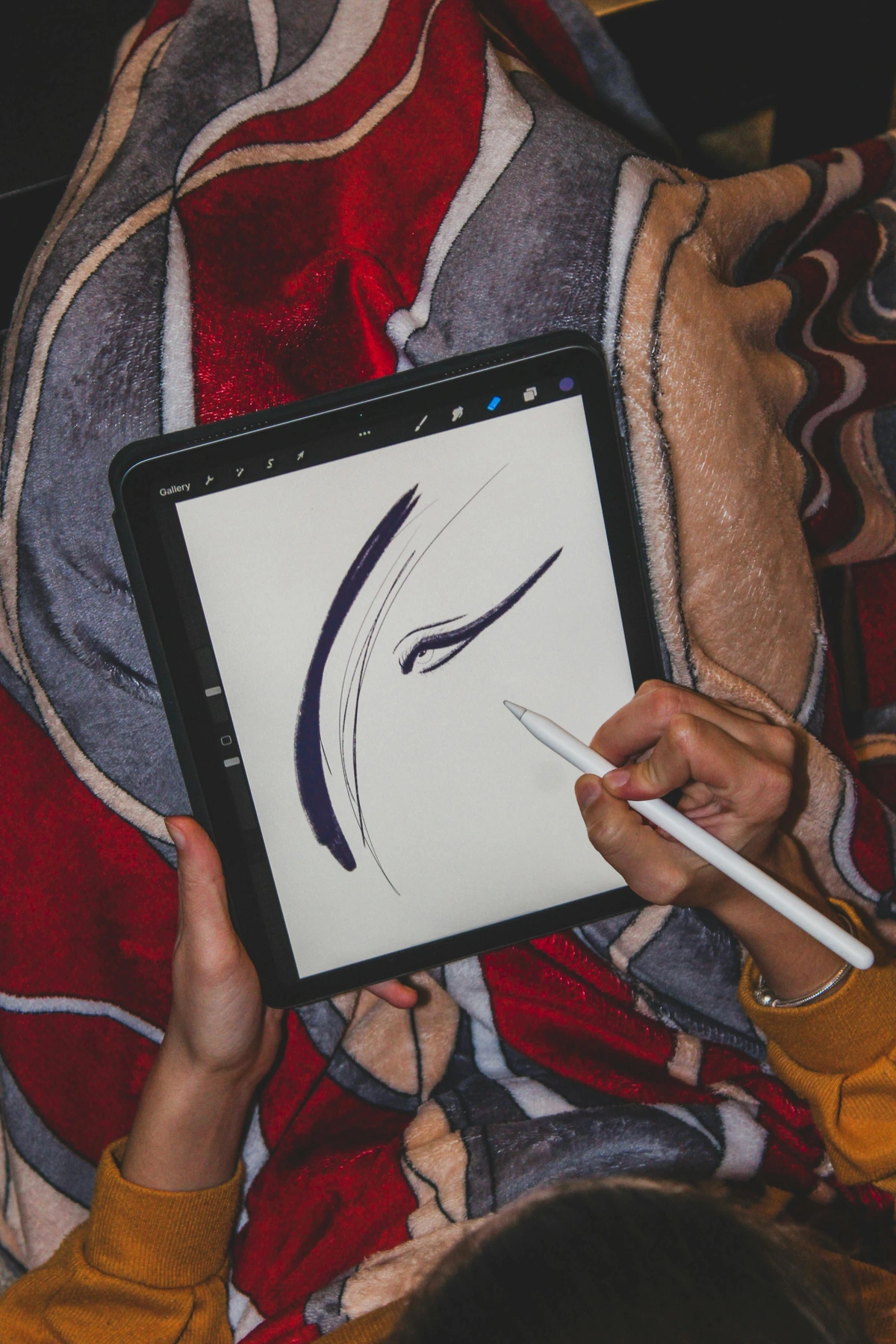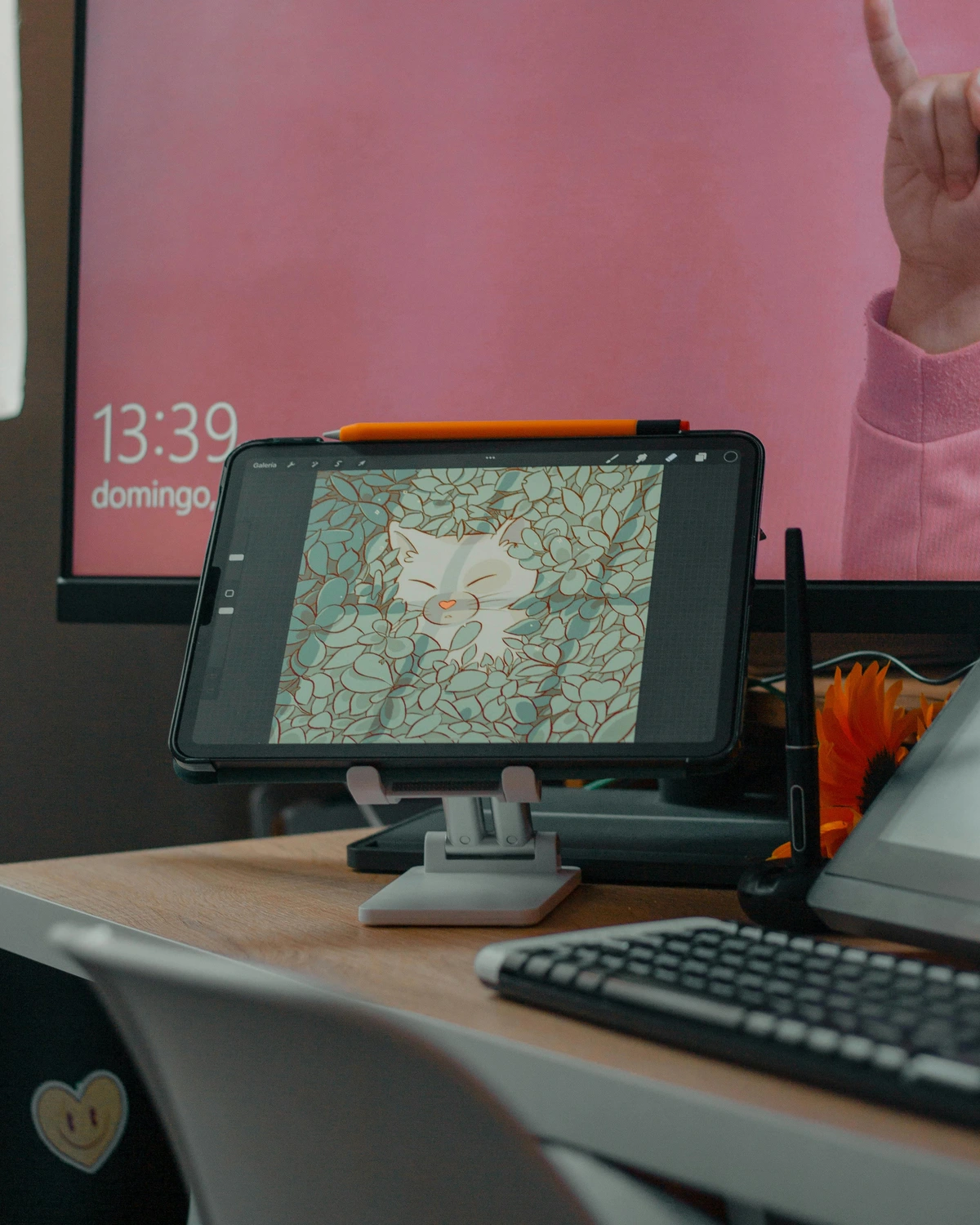
The Best Drawing Tablets for Beginners: A 2024 Review – My Honest Thoughts
Thinking about diving into digital art? As an artist, I share my personal journey and review the best drawing tablets for beginners in 2024, from budget-friendly options to creative powerhouses. No jargon, just real talk.
The Best Drawing Tablets for Beginners
My goodness, where do I even begin with drawing tablets? It feels like just yesterday I was getting my hands messy with paints and pastels, utterly convinced that digital art was some kind of futuristic magic I'd never quite grasp. Fast forward a few years (and countless hours of fumbling), and here I am, sharing my hard-earned wisdom on the best drawing tablets for beginners in 2024. If I can do it, you absolutely can too. Seriously, don't let the tech intimidate you.
Think of this article as us sitting down for a cup of coffee (or tea, or whatever fuels your creative spirit), and I'm just rambling about my journey and what I've learned. It's not about being a tech guru; it's about finding the right tool to unlock your creativity in the digital realm. And trust me, the undo button alone is worth the price of admission!
Why Even Bother with a Drawing Tablet, Anyway? (The Digital Advantage)
I know, I know. You might be thinking, "Zen, I love my best-acrylic-paint-brushes-for-artists or my essential-watercolor-supplies-for-beginners. Why switch?" And I hear you! There's an undeniable joy in the tactile experience of traditional art. But digital art? It opens up a whole new universe.
For me, the big draw was the freedom. No more worrying about running out of paint, or the sheer terror of messing up a canvas when I was almost done. Plus, the ability to experiment without consequence is just... exhilarating. It's like having an infinite art supply store at your fingertips, and everything is always perfectly clean (unless you spill actual coffee on your tablet, which I've done. Don't recommend).
Here's a quick rundown of why I think every aspiring artist should consider a drawing tablet:
- Infinite Canvas & Undo Button: My absolute favorite. Erase, resize, transform, duplicate – all without fear. A true game-changer for someone who sometimes changes their mind 17 times on a single brushstroke.
- Portability: You can literally carry your entire art studio in a backpack. Sketch on the train, at a coffee shop, or even just lounging on the couch. That's a huge win for an artist like me who's always on the go or just craving a change of scenery from my studio.
- Cost-Effective in the Long Run: While there's an initial investment, you save bundles on physical art supplies like paper, canvases, and paints. Plus, software often has a one-time fee or affordable subscription.
- Versatility: From sketching and illustration to painting and graphic design, one tablet can do it all. You can explore so many different styles and mediums, which reminds me a bit of my-journey-with-mixed-media:-blending-materials-for-abstract-expression in traditional art – just digital!
- Easy Sharing & Collaboration: Digital files are a breeze to share online, print, or even use in other projects. Perfect for showing off your progress or getting feedback.
Navigating the Digital Seas: Understanding Drawing Tablet Types
Alright, let's talk tech, but in a way that won't make your eyes glaze over. When I first looked into drawing tablets, I was completely overwhelmed. Graphics tablets, pen displays, standalone devices... what's the difference? It's like trying to choose between a watercolor brush, an oil painting knife, and a spray can when you're just trying to draw a stick figure!
But it's actually quite simple once you break it down. There are three main types, and each has its own charm.
Graphics Tablets (Screenless Wonders)
These are often the entry point for many beginners, including myself! A graphics tablet is essentially a flat, pressure-sensitive pad that connects to your computer. You draw on the pad with a special stylus, and your artwork appears on your computer monitor. It's a bit like driving while looking at the rearview mirror initially – a disconnect between your hand and what you see – but you get used to it surprisingly fast. I promise.
It's affordable, durable, and generally doesn't require its own power source (just USB). For someone just dipping their toes in, it's a fantastic, low-commitment way to test the waters of digital art. Plus, they're super portable, perfect for tossing in a bag with your laptop.

credit, licence
Graphics Tablets: Pros & Cons
Feature | Pro | Con | Ideal For | Note |
|---|---|---|---|---|
| Price | Generally the most affordable | N/A | Budget-conscious beginners | Great way to start without breaking the bank. |
| Portability | Very portable, lightweight | Requires a separate computer/laptop | Artists on the go (with a laptop) | Easy to slip into a backpack. |
| Learning Curve | Takes some getting used to (hand-eye disconnect) | Can be frustrating at first | Patient learners | Like learning to ride a bike – awkward at first, then second nature. |
| Durability | Very robust, no screen to crack | N/A | Travel, student use | Can take a beating, which is good for clumsy artists like me! |
Pen Display Tablets (See What You Draw!)
Now, if you want something that feels a bit more like drawing directly on paper, but still connected to your computer, then a pen display tablet is your next step. These tablets have a screen that you draw directly on, and they mirror your computer's display. It's much more intuitive, like having a literal digital canvas in front of you.
The immersion level is fantastic. You see your lines appear exactly where your stylus touches, which significantly reduces that initial awkwardness. However, they are more expensive and generally need to be plugged into power and your computer with multiple cables, making them less portable than their screenless cousins. Think of them as a dedicated workstation.

credit, licence
Pen Display Tablets: Pros & Cons
Feature | Pro | Con | Ideal For | Note |
|---|---|---|---|---|
| Price | Mid-range investment | More expensive than graphics tablets | Beginners ready to commit | A noticeable step up in cost, but also in experience. |
| Immersion | Draw directly on screen | Still requires a computer connection | Traditional artists transitioning | Feels more natural and direct. |
| Setup | More cables, sometimes external power | Less portable | Studio, dedicated workspace | Not something you'll casually toss in a small bag. |
| Accuracy | High precision and immediate feedback | N/A | Detailed work, smooth lines | What you see is precisely what you get. |
Standalone Tablets (The All-in-One Powerhouses)
These are the crème de la crème, the ultimate portable digital studio. Think iPads, Samsung Galaxy Tabs, and other dedicated drawing tablets that don't need to be tethered to a computer at all. They run their own operating system and apps, allowing you complete freedom to create anywhere.
This is where I often find myself doing my personal sketches or even developing concepts for new abstract art. The convenience is unparalleled. The downside? They come with the highest price tag, especially when you factor in the necessary stylus (like the Apple Pencil, which, let's be honest, is amazing but not cheap). They're an investment, for sure, but if you're serious about digital art and portability, they are truly fantastic. The software ecosystem (like Procreate on iPad) is often incredibly robust and intuitive.

credit, licence
Standalone Tablets: Pros & Cons
Feature | Pro | Con | Ideal For | Note |
|---|---|---|---|---|
| Price | Highest initial investment | N/A | Serious hobbyists, professionals | You're paying for a full computer in tablet form. |
| Mobility | Ultimate portability, no computer needed | N/A | Artists on the go, outdoor sketching | Your art studio literally fits in your hand. |
| App Ecosystem | Access to powerful mobile apps (e.g., Procreate) | Can be limited compared to desktop software | Digital natives, mobile-first artists | Some desktop software is still more feature-rich, but mobile apps are catching up fast. |
| User Experience | Seamless, intuitive, integrated system | N/A | All-in-one preference | Everything just works together. |
My Top Picks for Beginner Drawing Tablets in 2024 (Budget-Friendly to Aspirational)
Alright, enough with the theory! Let's get to the fun part: my personal recommendations for 2024. These are the tablets I've either used myself, researched extensively, or seen countless other artists rave about. Remember, "beginner" doesn't mean cheap or bad; it means accessible and effective for learning.
Entry-Level Graphics Tablets (Under $100 - My Go-To for Pure Basics)
If you're still on the fence, or truly just need something to sketch and practice with without a massive financial commitment, a graphics tablet is your best friend. These are solid, reliable workhorses.
Wacom Intuos Small (Bluetooth)
Wacom is, for many, the gold standard in drawing tablets. Their Intuos line is legendary for a reason. The Small Bluetooth version is fantastic because it gives you wireless freedom, which is a huge bonus for tidiness and comfort. The pen feels natural, the drivers are stable, and it's built to last. It's a bit like buying a trusty first car – maybe not flashy, but it gets the job done every single time.
Huion H640P
Another excellent contender. Huion has really stepped up its game in recent years, offering incredible value. The H640P is slim, lightweight, and comes with a battery-free pen (just like Wacom's), which is a massive convenience. It often gives you a slightly larger active drawing area for the same price point as a Wacom, which some artists really appreciate. I'm a big fan of options, and Huion provides a strong one here.
Key Features & Why I Like Them (Entry-Level Graphics Tablets)
Tablet | Active Area | Pen Pressure Levels | Programmable Keys | Why I Like It for Beginners |
|---|---|---|---|---|
| Wacom Intuos Small | 6.0 x 3.7 inches | 4096 | 4 ExpressKeys | Industry standard, robust drivers, great build quality, good pen feel. |
| Huion H640P | 6.3 x 3.9 inches | 8192 | 6 ExpressKeys | Excellent value, larger active area for the price, battery-free pen. |
Mid-Range Pen Display Tablets (Under $300 - Stepping Up Your Game)
Once you've decided digital art is for you and you want that direct-on-screen experience without completely breaking the bank, these are excellent choices. They're a significant leap in immersion.
XP-Pen Artist 12
When I talk about bang for your buck, XP-Pen often comes to mind. The Artist 12 offers a beautiful 11.6-inch full HD display that lets you draw directly on screen. It comes with a battery-free stylus and customizable shortcut keys, making it incredibly functional. The color accuracy is decent for the price, and the overall build feels surprisingly premium. It's a fantastic bridge between a basic graphics tablet and a high-end standalone device.
Huion Kamvas 13
Huion's Kamvas line is another strong performer in the pen display arena. The Kamvas 13 boasts a laminated screen (meaning no gap between the glass and the display, which is a big deal for accuracy and reducing parallax), a battery-free pen, and often comes with a stand. The color gamut is usually quite good, offering vivid colors that make your digital creations truly pop. This is a very compelling option for a slightly more refined drawing experience.
Key Features & Why I Like Them (Mid-Range Pen Display Tablets)
Tablet | Screen Size & Resolution | Pen Pressure Levels | Programmable Keys | Why I Like It for Beginners |
|---|---|---|---|---|
| XP-Pen Artist 12 | 11.6" Full HD | 8192 | 6 ExpressKeys | Affordable direct-on-screen experience, good build, decent color. |
| Huion Kamvas 13 | 13.3" Full HD Laminated | 8192 | 6 ExpressKeys | Excellent value for a laminated screen, great color, often includes a stand. |
"Investment" Standalone Tablets (Over $300 - When You're Serious)
These are for when you've fallen head over heels for digital art and you want the absolute best portable experience. They're essentially powerful mini-computers optimized for creativity.
iPad Air/Pro with Apple Pencil (2nd Gen)
If you're an Apple person, or even if you're not but crave a seamless, powerful, and intuitive experience, an iPad with an Apple Pencil is hard to beat. The responsiveness of the Apple Pencil is legendary – it's like drawing with magic. The Retina display is gorgeous, and the app ecosystem (hello, Procreate!) is unparalleled for artists. Yes, it's expensive, but the sheer joy and capability it brings are often worth it. It's the kind of tool that makes you want to draw more. Check out guide-to-using-procreate-for-abstract-art-sketches for some specific tips!
Samsung Galaxy Tab S Series with S Pen
For Android enthusiasts (or those who prefer a different ecosystem), the Samsung Galaxy Tab S series, paired with its S Pen, is a phenomenal alternative. Samsung's displays are stunning AMOLED, offering incredibly vibrant colors and deep blacks. The S Pen comes included with many of their tablets, which is a nice bonus, and it offers excellent pressure sensitivity. The Android app store has a growing number of powerful art apps, making these tablets incredibly versatile for both drawing and everyday tasks. It’s a very capable all-rounder.

Getting Started: From Box to Brushstroke
So, you've chosen your weapon of choice! Now what? Don't just stare at the box. Here's a little roadmap that I wish I'd had when I started:
- Driver Installation (for Graphics & Pen Displays): This is crucial. Before you even plug it in, go to the manufacturer's website and download the latest drivers for your specific model. Install them, restart your computer, then plug in your tablet. This smooths out so many potential headaches.
- Software Selection: You don't need expensive software to start! Free options like Krita, GIMP, or Autodesk Sketchbook are incredibly powerful. If you're on an iPad, Procreate is a must-have (one-time purchase). For more advanced users, Clip Studio Paint or Adobe Photoshop/Fresco are popular. Pick one, and really dig into it.
- Customize Your Settings: This is where the magic happens! Most tablets and software allow you to customize pen buttons and express keys (those little buttons on the tablet itself). Set them to things you use constantly: undo, redo, brush size, eraser. It will speed up your workflow immensely.
- Practice, Practice, Practice: Your first digital drawing will probably look... well, like your first digital drawing. Don't compare it to years of traditional art! Dedicate time to just scribbling, drawing basic shapes, and getting a feel for the pen and surface. Try making straight lines, circles, varying pressure. There are tons of free tutorials online. You'll be amazed at your progress in just a few days or weeks.
Common Pitfalls and How I (Try To) Avoid Them
Oh, the struggles! Digital art isn't always smooth sailing, especially at the beginning. I've hit almost every wall imaginable, but learning from them is part of the journey. Here are a few I've wrestled with:
- The Graphics Tablet Hand-Eye Disconnect: This was the biggest hurdle for me. My hand was drawing on a pad, but my eyes were glued to the screen. It felt completely unnatural. My advice? Don't try to look at your hand; focus entirely on the screen. Treat your hand as just the input device. It clicks eventually, I promise. Think of it like learning to type without looking at the keyboard.
- Overwhelm with Software Features: Art software can look like a spaceship control panel initially. My mistake was trying to learn everything at once. Instead, pick 2-3 tools you need for a specific task (e.g., a pencil brush, an eraser, a color picker) and master those. Then, slowly add more as you need them. You don't need to know what every single button does on day one.
- Forgetting to Use Shortcuts: Those programmable keys? Use them! I was initially too lazy to set them up, and then too lazy to use them. Big mistake. Once I forced myself to use them for undo/redo and brush size, my workflow became so much smoother. It's like having an extra pair of hands. Seriously, put "undo" on one of those buttons. You'll thank me later.

credit, licence
FAQs about Beginner Drawing Tablets
Still have questions swirling around your head? Let's tackle some common ones I often hear.
Do I really need a screen on my drawing tablet?
For a beginner, not necessarily! A screenless graphics tablet is an excellent, affordable starting point. While a screen display tablet offers a more intuitive




